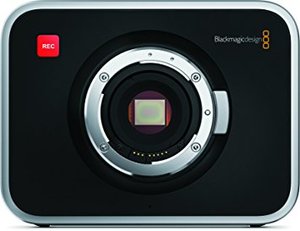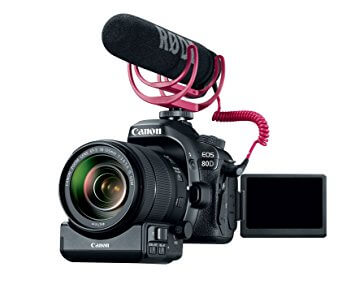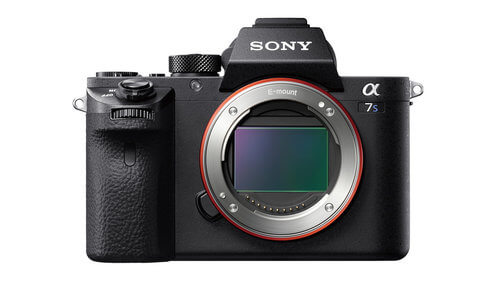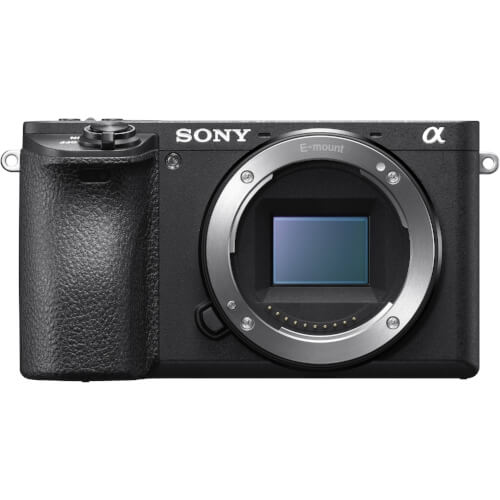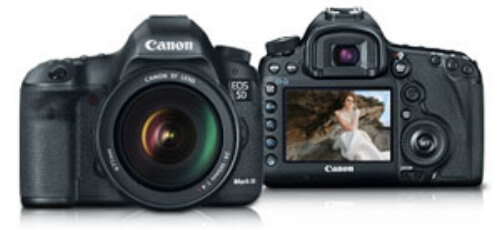In Depth Review of the Canon 80D DSLR Camera
As part of our review series on budget filmmaking cameras, we take a look in greater detail the Canon 80D DSLR.
Canon caters a wide range of cameras to satisfy the demands of all types of photographers and budget sizes. The wide range of Canon includes APS-C DSLRs for beginners, cameras for enthusiasts and full-framed DSLRs for pros.
Check pricing and availability here.
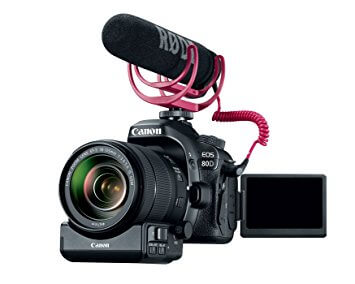
The enthusiast-level DSLR, Canon EOS 80D sports a 24 MP APS-C CMOS processor. It offers on-sensor phase-detection autofocus system. Rather than using latest DIGIC 7 processor, it uses powerful DIGIC 6 processor.
Canon 80D camera features flicker-detection technology which can detect flickering light and coincide with the peak brightness of the light source. It is due to this technology that results are more consistent.
Read on to know more about the features of Canon 80D.
Design and handling of the Canon 80D Camera
Nearly identical to its predecessor, the body of Canon 80D is sealed against dust and moisture. The camera has a polycarbonate exterior and its chassis is made up of magnesium aluminum alloy.
All the majority controls of the camera are accessible via the articulating rear touch screen. The camera features one-touch NFC technology in addition with Wi-Fi connectivity. There exists a large thumb rest on the rear body of the camera, which is a remarkable change in its build.
AF and performance
As compared to the 19 AF points of its predecessor, Canon 80D has 45 AF points. All the AF points are cross type. Out of 45, 27 points are more active when using a teleconverter and a lens combination with a maximum aperture of f/8. Canon 80D features dual pixel CMOS AF technology that refers to its sensor-based autofocus technology.
While in live view mode, the internal mirror lifts out and allows the camera to record light properly. The dual pixel CMOS AF sensor is beneficial to both photographers and videographers.
Performance
The introduction of continuous Auto Focus in live view is the most notable improvement in the camera. It works amazingly well with objects moving close and far. The performance of the camera lowers, when used in low-light environments.
Its auto focus feature is snappy and responsive out of live view. The camera boasts a higher buffer depth and can record 110 JPEGs or 25 files up to 7 fps.
Canon 80D offers the best view finder. With this camera, you record exactly what you see.
Image Quality
Canon 80D’s Dual pixel CMOS AF sensor and 24-million pixel sensor gives you the freedom to crop the images to any desired extent. It also helps in preserving a high level of detail. Canon 80D is known to provide an impressive 3400l/ph resolution at higher sensitivities.
The dynamic range of 80D at ISO 100 results 12.6 EV, it drops below 12 EV when ISO doubled but stays above 800 when ISO is up to 400.
Resolution
SAMPLE FOOTAGE OF THE CANON 80D AT WORK.
Canon 80D shows an excellent improvement in resolution in the sensitivity range. When pushed harder, luminance noise softens the finest detail and reduces resolution. Luminance noise works effectively between ISO 3200 and 6400. After ISO 6400, chroma noise takes the course.
Canon 80D vs. the Sony A6500
If you are thinking of getting a camera and are torn between the Canon 80D and Sony A6500, then this review should have some useful insight for you. In this section, we shall talk a look at the Canon 80D vs Sony A6500 battle to help you make an informed decision.
1) Body structure and weight
The differences between the pair stem right away from the architecture of their respective bodies with the A6500 adopting an almost rectangular build while the Canon 80D takes on a bulkier frame that is extended at the top. Consequently, the latter is heavier as it records a weight of 730g compared to the Sony’s 453 g. Dimension wise, the Sony A6500 is 53 mm thick with a length of 120 mm and a height of 67 mm. The 80D meanwhile has measurement readings of 139 mm in length, 105 mm for height and a width of 79 mm.
This statics would be incomplete without taking into account the difference in lenses by each model. While the sensors are more or less the same size, the DSLR Canon 80D has a larger flange-to-focal-plane-distance, which is a characteristic of cameras of its kind, compared to its mirrorless counterpart. This means that the 80D naturally has heavier and bigger lenses hence why it weighs more. Both devices are weather sealed and perfect for harsh environments.
2) Battery life
With regards to battery life, the 80D comes out on top as it packs more working hours than its smaller opposite number. It incorporates an LP-E6N Lithium-ion battery that has a capacity of 1865 mAh and is able to produce, from a single charge, 960 images. The A500 contrastingly takes just 350 shots thanks to its smaller sized battery -the Sony NP-FW500- that has a capacity 800 mAh less than the former.
3) Sensor attributes
An AL S-C sensor is a common feature of both cameras but the difference is in the minor size differences. The 80D is considerably smaller having an 8 % smaller sensor which results in format factor variations of 1.6 for the Canon and 1.5 for the A6500. The sensor width to sensor height ratio of 3:2 is however identical as both models are imbued with the same native aspect ratio.
In short, these sensor area variations often mean that the one with a large sense, i.e. the A500, tends to produce slightly better image quality due to more individual pixel units that translate to a richer color depth, a wider dynamic range and better sensitivity under conditions of low light. The pixel pitch for the Sony stands at 3.91 μm compared to the 80D’s 3.75 μm and the former therefore has the upper hand when it comes to light gathering capacity. That said, both models have a resolution of 24 megapixels.
4) Viewfinder specs
The 80D has an optical viewfinder (OVF) while the A500 has an electronic one (EVF). Each viewfinder variety has its own benefits with the EVF having the advantage of an unobstructed view when taking a photo compared to OVF where the view is obstructed for a short moment during shots. Moreover, the A500 thereby has a framing view with complimentary shooting details thanks to its EVF. For OVF, the clarity tends to fare much better as the light actually goes through the camera as opposed to a digital representation which is the case with EVF. Aside from a clear framing image as well, the 80D offers lag-free viewing.
5) Flip-out screen
The flip-out screen is a notable feature of the Canon 80 D that is lacking in the A500. This minute accessory gives the 80D a slight edge over its counterpart as it makes the camera better for shooting around corners and in confined spaces as well. It is adept at taking selfies, shooting from higher angles and low angles too. The live view capability of a flip-out screen also means you can adjust your scenery as you please without having to go round to the back of the camera as is the case with the Sony A500.
6) Shutter speed
The Canon 80D also emerges victorious when it comes to shutter speed as it boasts a commendable time of 1/8000s compared to the Sony A500’s maximum speed of 1/4000s. This means that the former is adept at taking photos of high-speed objects without blurring.
7) Focus points
It’s a win for Sony when it comes to focus points as it amasses 425 focus points compared to the Canon’s 45. As a result, the A500 has greater flexibility when selecting particular areas of the scene to concentrate on. What’s more, in automatic mode, this model has a better probability to select the most ideal scene areas to focus on.
8) Light Sensitivity
The A500 has an ISO level of 51200 compared to its rival’s 25600. This higher light sensitivity makes this Sony camera able to take photos in low-light conditions without requiring a flash. It also makes it very compatible with a fast shutter as the two aspects work hand in hand to effectively capture fast-paced objects.
9) Video quality
When it comes to video quality, the Cannon also comes out second best in this category with a maximum resolution of 1080/60p compared to the A6500’s high definition capture of 4k/30p or 2160/30p. The Sony model also has a phase detection autofocus that makes it capable of clearly shooting a scene with multiple high-speed objects.
10) Time-lapse function
Time-lapse functionality is a feature unique to the 80D which enables it to show a detailed extension of time sped up. Consequently, this Canon model can seamlessly fuse a chain of photographs take from the same position over an extended time to make a brief video. It is therefore perfect to capture phenomena such as clouds racing about the sky and sunsets.
11) Cinema mode
The Sony A6500 has a traditionally-used 24-p (i.e. 24 frames per second video format) cinema mode that is lacking in the 80D. The camera can, therefore, be used to create film-esque motion traits.
And that’s just about it for the Canon 80d vs Sony a6500 match up. Taking into consideration the attribute differences on either side of your preference scale, you should now be able to select the right model for you.
In conclusion, this review gives the Canon 80D DSLR camera a thumbs up and a good entry level camera for the budget conscious filmmaker.
2Bridges Productions Copyright © 2017. Address: 25 Monroe St, New York, NY 10002. Phone: 516-659-7074 – All Rights Reserved.
We are a participant in the Amazon Services LLC Associates Program, an affiliate advertising program designed to provide a means for us to earn fees by linking to Amazon.com and affiliated sites.

